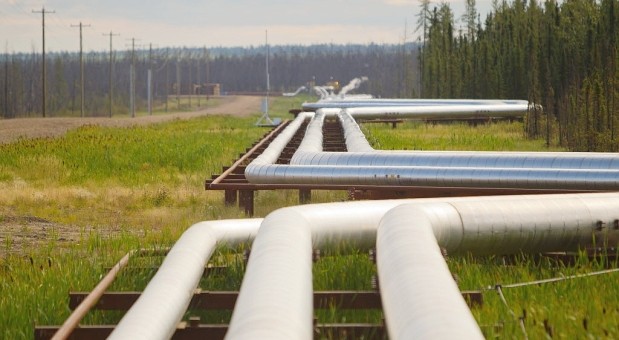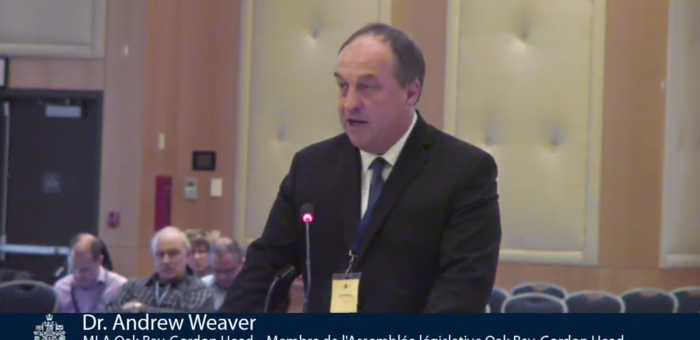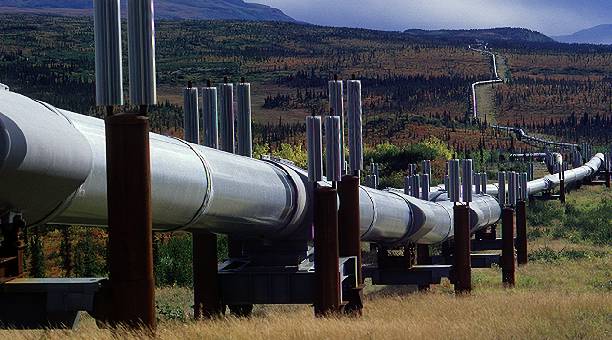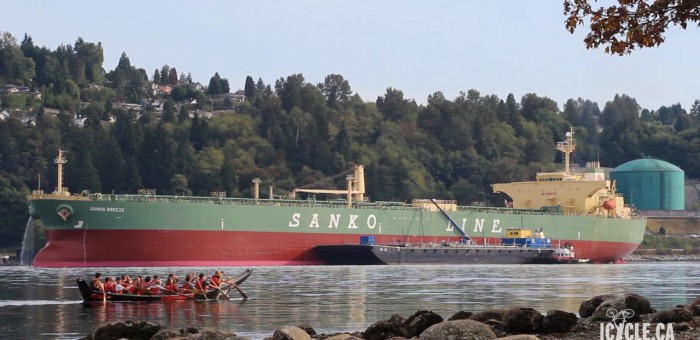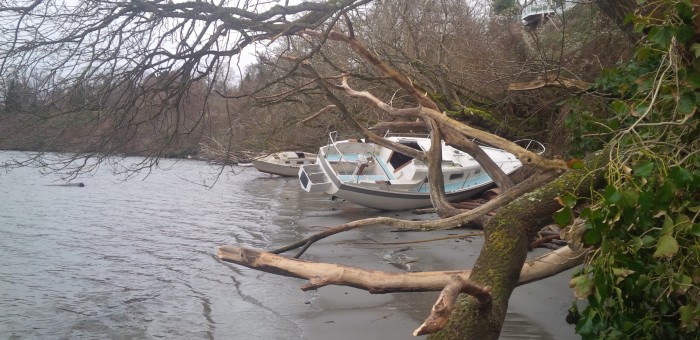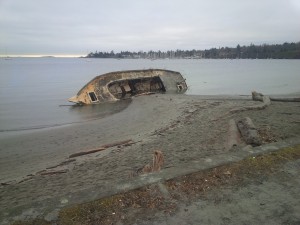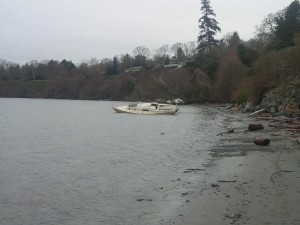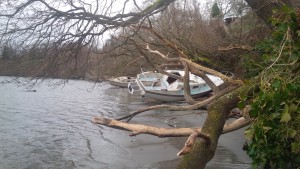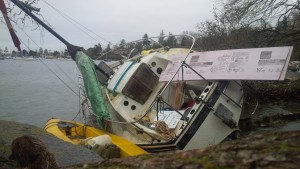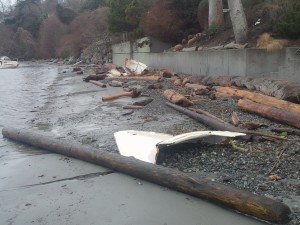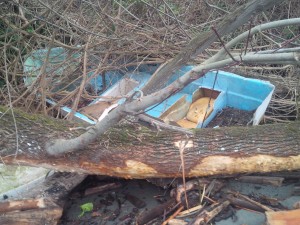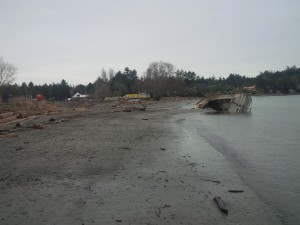Environment
New Federal Rules on Energy Projects Welcome in BC
Media Statement: January 28, 2016
New Federal Rules on Energy Projects Welcome in BC
For Immediate Release
Victoria B.C. – New Federal rules on major energy projects announced today from the Government of Canada are welcomed by Andrew Weaver, Leader of the BC Green Party and MLA for Oak Bay – Gordon Head.
“I am absolutely thrilled that the new federal Liberal Government continues to exemplify leadership on climate change” says Andrew Weaver. “As a climate scientist, I see including upstream emissions on energy projects as a major step forward for Canada. It is long overdue and the federal government deserves a lot of credit for introducing this substantive change to the NEB process.”
Earlier today the Minister for the Environment and Climate Change and the Minister for Natural Resources held a joint press conference on the new regulatory changes the Federal government is implementing.
“It’s encouraging to see some leadership from our Federal Government,” says Weaver. “I strongly agree with Minister McKenna’s comments about the need to reinstate Canadian’s trust in the environmental review process.”
For Kinder Morgan, the government will appoint a ministerial representative to consult the communities, including indigenous communities, who could be affected by the project. The new rules announced today will delay the Kinder Morgan pipeline review by at least four months – a cabinet decision on the project is now expected in December 2016.
“It’s important to note, however, that as the MLA for a coastal riding, this announcement does nothing to alleviate my concerns on spill response and spill preparedness. For British Columbians the central issue is about the potential for a catastrophic accident and not as much about the climate impacts of the project. On these grounds the project should still be rejected.”
The new rules will also affect at least two LNG projects in the province: the Pacific Northwest LNG project and the Woodfibre LNG project.
“I’ve stated many times that our climate goals are incompatible with the BC Liberals’ LNG strategy so I’m encouraged to see that upstream emissions will now be considered as part of the environmental review for LNG projects” says Weaver. “While I am hopeful that the inclusion of upstream emissions will be given the importance it deserves, I caution that it will be difficult for the Federal Government to accurately account for fugitive emissions in its assessment.”
Mat Wright
Press Secretary – Andrew Weaver MLA
Cell: 250 216 3382
Mat.wright@leg.bc.ca
Twitter: @MatVic
Trans Mountain Pipeline Proposal NEB Oral Testimony Video
On January 8th I submitted my final argument to the National Energy Board as part of the National Energy Board Hearings for the TransMountain Expansion Project. My final oral summary argument was given on January 20. The video of my oral testimony is now available and can be viewed below.
Video of Oral Summary Argument
Media Statement: Andrew Weaver presents final oral argument in NEB hearings
Media Statement January 20, 2016
Andrew Weaver presents final oral argument in NEB hearings
For immediate release
Victoria B.C. – Today at 1:30 pm, Andrew Weaver, MLA for Oak Bay – Gordon Head and Leader of the B.C. Green Party, presented his oral summary argument in the National Energy Board Hearings for the Trans Mountain Expansion Project. Representatives from the Coldwater Indian Band spoke before Andrew Weaver and he was followed by the Stz’uminus First Nation.
Andrew Weaver was the only MLA who applied to be an intervenor, reviewing the project both as a scientist, critiquing the Proponent’s understanding of how diluted bitumen would interact with the marine environment, and as an MLA, raising concerns shared by people across BC.
“I have been a part of this process for almost two years, examining the application and trying to get answers about the impacts it may have on our communities,” said Andrew Weaver. “The fact is that Trans Mountain have not demonstrated that they have the ability to respond to a dilbit spill in BC coastal waters. This is just one of many reasons that this application needs to be rejected.”
In his oral argument presented today, Weaver outlined a number of deficiencies, both with the application and with the NEB process. His testimony outlined that there are no conditions that could address the flaws inherent in Trans Mountain’s Proposal. He argued that the Board should recommend to the Governor in Council that the Application be dismissed altogether.
“Trans Mountain has failed to demonstrate that this pipeline is in the best interests of British Columbians,” Andrew Weaver told the Board today. “There considerable deficiencies inherent in existing and proposed spill response measure and the human health risk assessment provided by the Proponent does not adequately portray the potential health effects that may occur in the event of an oil spill.”
In light of the evidence, Andrew Weaver and the BC Green Party have called for a moratorium to be put in place on the existing tanker transportation of Dilbit along the West Coast.
A transcript of Andrew Weaver’s oral argument can be found on his website: http://www.andrewjweaver.ca/2016/01/20/final-oral-summary/
Media Contact
Mat Wright – Press Secretary, Andrew Weaver MLA
1 250 216 3382
mat.wright@leg.bc.ca
Final Oral Summary Argument on Trans Mountain Pipeline Proposal
On January 8th I submitted my final argument to the National Energy Board as part of the National Energy Board Hearings for the TransMountain Expansion Project. Today I provided my final oral summary argument at the Delta Burnaby Hotel and Conference Centre, 4331 Dominion Street, Burnaby, British Columbia. Representatives from the Coldwater Indian Band spoke before me and I was followed by the Stz’uminus First Nation.
As you will see from my oral argument below, based on the substantive deficiencies elaborated in my written submission, I respectfully submitted that the Board must conclude that the Application is incomplete, pursuant to the threshold requirement of s. 52(1) of the NEB Act, and therefore decline to forward a recommendation to the Governor in Council. In the alternative, I request that the Board recommend to the Governor in Council that the Application be dismissed. I submit that no conditions could sufficiently remedy the flaws inherent in the Application and therefore make no submissions as to potential conditions that may be imposed.
Hearing Order OH-001-2014
Trans Mountain Pipeline ULC (Trans Mountain)
Application for the Trans Mountain Expansion Project (Project)
Oral Summary Argument
Name of Intervenor: Andrew Weaver, MLA
1. Introduction
I would like to begin by thanking the Board for allotting me the time to present my oral summary argument. I have laid out the full scope of my position, including supporting evidence, in my final written argument. My oral summary argument will highlight my main concerns and provide my overarching rationale for why I believe this project should not proceed.
For the purpose of this oral summary argument, when I use the term “proponent”, I am referring to Trans Mountain Pipeline ULC. When I use the term “application”, I am referring to the application submitted by the proponent for a Certificate of Public Convenience and Necessity, pursuant to section 52 of the NEB Act, for the Trans Mountain Expansion Project. Finally, when I use the term “project”, I am referring to the proposed Trans Mountain Expansion Project.
My Focus
Let me also begin by offering some information about my background and focus as it pertains to this hearing process. I sought intervention status both as a Member of the Legislative Assembly of British Columbia and as a scientist with a doctorate in applied mathematics and with specialty in physical oceanography and atmospheric and climate science. As an MLA, I was first elected in May 2013 to represent the constituency of Oak Bay-Gordon Head, which is located along the Trans Mountain Tanker Sailing Route on the southeastern tip of Vancouver Island. Given my representative function, I sought to focus on and give voice to the concerns of my constituents as they pertain to the Project. I believe this is particularly important, given that I am the only BC MLA with intervenor status in this hearing process.
As a scientist, I served as Lansdowne Professor and Canada Research Chair in climate modeling and analysis in the School of Earth and Ocean Sciences at the University of Victoria, where I worked for over 20 years. I have been a Lead Author on the United Nations Intergovernmental Panel on Climate Change’s 2nd, 3rd, 4th and 5th scientific assessments and have authored and co-authored over 200 peer-reviewed, scientific papers. I am a Fellow of the Royal Society of Canada, Canadian Meteorological and Oceanographic Society, the American Meteorological Society, the American Geophysical Union and the American Association for the Advancement of Science. Throughout this process, I have applied my scientific expertise, particularly in physical oceanography and modelling, to evaluate the evidence provided in this Application.
Given my constituency and background, I have chosen to focus particularly on the risks associated with marine oil spills. My argument will therefore focus primarily on the following three issue areas:
- The potential environmental and socio-economic effects of marine shipping activities that would result from the proposed project, including the potential effects of accidents or malfunctions that may occur.
- Contingency planning for spills, accidents or malfunctions, during construction and operation of the project.
- Safety and security during construction of the proposed project and operation of the project, including emergency response planning and third-party damage prevention.
Summary of my Argument
I will present my argument in five parts. First, I will discuss the significant shortfalls inherent in TERMPOL 3.15 – General Risk Analysis and Intended Methods of Reducing Risk, and outline how the Proponent has failed to adequately represent the degree of risk associated with the Project. Second, I will present an analysis and evaluation of the scientific studies presented by the Proponent with regard to the fate and behaviour of diluted bitumen in a marine environment, arguing that Trans Mountain has failed to adequately support its assumption that diluted bitumen will remain positively buoyant in the event of a spill. Third, I will discuss the deficiencies inherent in existing and proposed spill response measures. Fourth, I will offer an assessment of the human health risk assessment provided by the Proponent, arguing that it does not adequately portray the potential health effects that may occur in the event of an oil spill. Finally, I will apply these and other points to demonstrate that the Proponent has neglected to represent the full scope of effects the Project could have on local communities, such as the riding of Oak Bay-Gordon Head.
Through these five parts, I will argue the following: First, Trans Mountain has failed to adequately and accurately represent the full scope of risks and negative effects an oil tanker spill would present to human health, the environment and coastal communities. Second, Trans Mountain has failed to represent a clear and satisfactory ability to respond to an oil spill in a manner that would sufficiently mitigate the negative effects as well as adequately contain and recover the spilled oil. As a result, Trans Mountain has failed to demonstrate it and its partner organizations have adequately understood, and have the capacity to sufficiently mitigate, the serious risks posed by the Trans Mountain Expansion Project to justify a complete Application or a positive recommendation to the Governor in Council.
For these reasons, as detailed below, I respectfully submit that the Board should conclude that the Application is incomplete, and should therefore decline to forward a recommendation to the GIC. In the alternative, I submit that the Board must recommend to the GIC that the Application be dismissed. Due to the various substantive deficiencies with Trans Mountain’s Application set out in the written argument that follows, I submit that these are the only courses of action open to the Board. For this reason, I have made no submissions as to potential conditions that the Board could impose, as no such conditions could sufficiently remedy the flaws inherent in Trans Mountain’s Application.
Procedural Concerns
Before I move to the core of my final argument I would like to say a few words about the hearing process. As the only BC MLA participating as an intervenor in these hearings, I felt it was my duty and responsibility to continue with the process to the end. Had I withdrawn from the hearing process, as so many others have, British Columbians would not have had a single provincially elected representative who could represent them as a full participant in this process. I consider this particularly important given that numerous British Columbians have argued that they were actively excluded from participating in this review.
That said, it has been clear to me for quite some time that this process is neither fair nor objective. The Board’s decision to consider upstream and downstream economic issues, while excluding upstream and downstream environmental issues in my view is both inconsistent and biased towards the proponent. Environmental and Economic effects are intimately linked and cannot arbitrarily be separated from each other.
The Board’s decision to remove oral cross-examination from the hearing process seriously undermined intervenors’ ability to test Trans Mountain’s evidence. That intervenors had to challenge thousands of Trans Mountain’s IR responses is shocking. That the Board only ruled in intervenors’ favour fewer than 5% of the time is truly disappointing. The Board plays a critical role in ensuring that intervenors are supported to scrutinize the proponent. Yet the manner in which this hearing process has been conducted has seriously undermined my ability to get sufficient answers to my questions. I hope that at the very least, the Board will agree that the burden of proof lies with Trans Mountain, and that the company’s failure to provide adequate answers to thousands of information requests, in turn constitutes a failure to meet that burden of proof.
Yet, I fear that this hearing process is more about ticking boxes than truly reviewing the merits of the proponent’s application. I worry that the Board decided long ago that the Trans Mountain Expansion Project would be approved, regardless of what happened in these hearings.
Should that be the case, I am confident that both the Board and the Proponent will be hearing from British Columbians. For it is clear that even if Trans Mountain has succeeded in getting the Board’s support, it has failed to earn the support of the citizens of this province.
I hope I am wrong. I hope the outcome of this hearing process was not decided months ago, as it would seem. So I submit the following oral summary argument in the hope that the points I am about to make will truly be considered – for they paint a picture of a project that simply cannot be approved.
2. Probability of a Tanker-Based Oil Spill
As a part of their Application, Trans Mountain was required to assess the relative additional risk the Project would pose in the tanker sailing route. Trans Mountain made its case, as summarized in sections 5.2 and 5.3 of Volume 8A, based primarily on two reports: TERMPOL 3.8 – Casualty Data Survey and TERMPOL 3.15 – General Risk Analysis and Intended Methods of Reducing Risk. Together, these reports form the basis of Trans Mountain’s case regarding the degree of risk posed by the Project.
I addressed the Casualty Data Survey in detail in my final written argument. Here, I will focus solely on TERMPOL 3.15. As will be outlined below, the Board has no credible way of assessing the validity of TERMPOL 3.15 and hence should give it no weight in its consideration.
The Risk Analysis
Through TERMPOL 3.15, Trans Mountain set out to build the case that the additional risk posed by and relating to Project oil tankers could be successfully mitigated by additional risk reduction measures, namely the extended escort tug and the moving exclusion zone. In building their case, they attempted to estimate the baseline risk posed by current marine traffic, the additional risk posed by Project tankers and the extent to which the risk reduction measures could help mitigate that additional risk.
According to the analysis, the return period for a spill of any size is 309 years at present conditions. With the implementation of the Trans Mountain Expansion Project, the return period drops to 46 years. However, with the addition of the extended escort tug and the moving exclusion zone, DNV calculates that the return period will increase to 237 years.
The accuracy of those estimates depends predominantly on the extent to which the model – MARCS – accurately represents real world conditions in the marine study area. The first questions one must ask, therefore, are: Have the baseline parameters of MARCS and the risk reduction factors been validated for the marine study area? Has a sensitivity analysis been conducted on the overall model and on each risk reduction factor? How has the model been calibrated to avoid ‘tuning’, so as to ensure its predictive abilities?
There are two essential ways of answering these questions: The first is to have the model be made available to participants in the hearing process so that they may conduct independent analyses of its representative and predictive abilities. Unfortunately, MARCS is a proprietary model and, hence, access to the model has been denied.
The other is to provide the information necessary to answer these questions in the absence of access to the model. At a minimum, one would need any back-up, peer-reviewed and independent evaluations of the model. DNV references several back-up studies, but none were provided on record. Moreover, one would also need the actual validation and sensitivity analyses that were conducted for the overall model and for the individual risk reduction factors. Unfortunately, Trans Mountain has not provided this information.
At the end of the hearing process, here is where the information stands:
- The general discussions of the sensitivity and validation of MARCS provided in Section 11 of TERMPOL 3.15 remain entirely insufficient and do not provide the information necessary to adequately evaluate the accuracy of the model.
- We know the basic parameters of MARCS are based on North Sea average shipping operations in the mid to late 1990s. Yet no information has been provided as to how the model has since been calibrated for current and local conditions along the Trans Mountain Tanker Sailing Route. We therefore have no way of knowing if the basic parameters of MARCS are truly representative of local conditions for the purposes of this Project.
- Not a single validation or sensitivity analysis was provided for any of the risk reduction factors applied to MARCS. We therefore cannot have confidence that those factors have been applied accurately and that they truly represent real world conditions along the tanker sailing route.
- The fact that MARCS may have successfully represented past cases is not sufficient evidence to conclude that MARCS can accurately represent future cases, including the Trans Mountain Expansion Project. This is because one can ‘tune’ over errors and inconsistencies in the model to achieve the desired result, without actually ever addressing those errors. Trans Mountain has failed to provide sufficient information to discount ‘tuning’ as a realistic and reasonable possibility. As such, one still cannot have confidence in the predictive abilities of MARCS.
In the absence of this information, one simply cannot properly evaluate the representative or predictive nature of MARCS as it pertains to the Risk Analysis conducted for the Project. Without this ability, one has no way of knowing if the results of the MARCS analysis are accurate or not. Given the serious impact a spill could have on the region, it would be irresponsible to accept the assertions provided in Trans Mountain’s Application in the absence of evidence.
It is for this reason that I argue that the risk analysis provided in TERMPOL 3.15 should not be given any weighting in the Board’s consideration and final decision. Lacking a credible and substantiated risk analysis, I submit that Trans Mountain’s Application is incomplete.
3. Fate and Behaviour of Diluted Bitumen in Marine Environments
Trans Mountain based their entire analysis of the fate and behaviour of diluted bitumen (dilbit) in the marine environment on the faulty assumption that dilbit floats. Published evidence, together with a Federal government study and an Environment Canada presentation to the Royal Society of Canada’s Expert Panel on The Behaviour and Environmental Impacts of Crude Oil Released into Aqueous Environments, all of which are submitted as evidence to the NEB, clearly conclude otherwise. Unlike other crude oils, dilbit can sink in the presence of suspended particulate matter (e.g. sediment particles in the ocean). Suspended particulate matter is very common in B.C.’s coastal waters, meaning that any dilbit spill would likely lead to submerged oil. Currently there is no ability to effectively clean up oil that sinks below the surface, making dilbit a particularly risky substance to transport.
The proponent has based the assessment of the fate and behaviour of diluted bitumen in the marine environment on two submissions. The first contained a comparison of the properties of diluted bitumen with other oils. The second commissioned report, referred to as the Gainford study, undertook tank experiments using saline water (typical of Burrard inlet) that did not include suspended sediments.
There is strong evidence that dilbit could sink in seawater containing sufficient suspended sediments of which there are no shortage in our coastal waters. The Salish Sea receives year round sediment-laden freshwater discharge from the Fraser River. The tank experiments conducted in A4H9A1 where sediments were accounted for noted that:
“high-energy wave action mixed the sediments with diluted bitumen, causing the mixture to sink or be dispersed as floating tarballs,”
Similarly, the Environment Canada presentation to the RSC Expert Panel noted that in the presence of fine to medium suspended sediments with fresh to moderate weathering, a large part of the oil sinks as fine oil particles as in the case of what occurred in the Kalamazoo spill.
It is clear that unless required to do so, Trans Mountain has no intention of conducting additional tank and/or field studies to explore the fate and behaviour of diluted bitumen in the coastal environment where sediments are present in the water column. Until such time as these studies are available, it is simply not possible to properly assess the risk and potential damages associated with a diluted bitumen spill in the Salish Sea. I submit that in light of the glaring gap in scientific understanding, it would be reckless to approve the Trans Mountain project at this time.
Furthermore two subsequent independent expert assessments validate my assertion by making it abundantly clear that we simply to not know enough to properly assess the risk and potential damages associated with a diluted bitumen spill in the Salish Sea. The two expert assessment are The Royal Society of Canada Expert Panel Report entitled: The Behaviour and Environmental Impact of Crude Oil Released in Aqueous Environments, and the US National Academy of Science’s report entitled Spills of Diluted Bitumen from Pipelines: A Comparative Study of Environmental Fate, Effects, and Response
In fact, given that diluted bitumen is already being loaded onto tankers at the Burnaby facility, it behoves the National Energy Board to recommend an immediate moratorium on any diluted bitumen shipments until such time as scientific understanding is improved as to the fate and behaviour of diluted bitumen in the marine environment.
Incomplete and Uncertain Ocean Modeling Analysis
The proponent has conducted a number of ocean model simulations using the proprietary H3D model.
As also noted by intervenor Dr. David Farmer, FRS, FRSC, who has extensive expertise in ocean physics and, in particular small scale ocean mixing processes, tidal fronts, vortex sheet tilting, breaking internal waves and whirlpools play a key role in mixing and subduction in the Strait of Juan de Fuca. Many of these complex mixing processes are non-hydrostatic. As such the use of a hydrostatic model is not appropriate in the present context.
I also posed numerous questions with respect to the validation of H3D. The proponent argued several times “The primary validation of an oceanographic model concerns the reproduction of observed tidal heights”. This statement is simply incorrect. Tidal heights are easy to reproduce with much simpler models than H3D. For ocean model validation, an assessment is required of the three dimensional velocity, temperature and salinity fields. In the case of oil spill modeling, it’s critical to evaluate the three-dimensional current fields.
The proponent discussed only one form of current evaluation in the original submission. Bob Lord fell in the water on July 25, 1993 and his drift was subsequently simulated. In my more than three decades of ocean and climate modeling research, I have never before heard of a person falling out of a ship being used as a data point for model validation.
While evidence exists to suggest that the model does a reasonable job capturing the magnitude of the long channel flow, the model clearly did not capture the across channel flow. But it is precisely this across channel flow that is critical in assessing where oil ends up if a spill occurs.
In addition, no evaluation of vertical flow was provided. This information is critical if one wants to assess the adequacy of the model in capturing the mixing and subduction processes mentioned above.
And given that the model is hydrostatic, there will be no vertical acceleration. As a result the vertical velocity field, and subsequently any vertical advection of tracers, will almost certainly be unrealistic leading one to question the suitability of H3D for this application in light of the complex oceanography of the region and the unique properties of dilbit.
It is therefore my expert opinion that the proprietary ocean model that has been used to predict the fate and behavior of a potential dilbit spill in the Salish Sea is not the appropriate tool to address the questions being asked.
4. Proposed and Existing Oil Spill Response and Recovery Capacity
Western Canada Marine Response Corporation’s “Future Oil Spill Response Approach Plan” outlines WCMRC and Trans Mountain’s proposal for enhancing existing oil spill response capacity in the event that the Project is approved. While the proposed enhancements would certainly constitute a significant improvement, I argue that even with those enhancements, insufficient capacity will exist to adequately respond to a dilbit spill. There are three primary reasons:
- As previously noted, dilbit can sink or submerge in the presence of suspended particulate matter, which is common in the marine study area. Based on the information provided, it is clear that WCMRC currently does not, and, under the proposed enhancements still would not, have any capacity to recover submerged or sunken oils.
- Under proposed enhancements, WCMRC would have to rely on cascading equipment in from other jurisdictions to respond to a spill larger than 20,000 tonnes. Yet, the proponent has failed to adequately outline the scope, ability and potential complications associated with cascading in the additional equipment. One therefore has no way of evaluating whether this is an effective approach or not, yet it is clear from Trans Mountain’s descriptions that it is a highly uncertain process.
- Even a 20,000 tonne response capacity does not imply the ability to recover all 20,000 tonnes of spilled oil. Recovery rates on average are only 5 to 15%, which, I would argue, is too low to demonstrate sufficient ability to mitigate the risks of this project.
Arachne Reef Oil Spill Response Simulation Study
Meanwhile the simulated spill scenario that was provided by EBA and WCMRC at Arachne reef to demonstrate the effectiveness of the proposed spill response enhancements, can only be seen as a completely unrealistic scenario.
I submit that collectively the assumptions applied to this simulation are not adequately representative of conditions that response crews will likely encounter in the event of a spill along the Trans Mountain Tanker Sailing Route. The representativeness of a scenario’s assumptions influences the accuracy of the results as evaluative or representative outputs. By not applying sufficiently representative assumptions to the simulation, the authors were able to derive better-than-average results that would likely not be representative of real world conditions.
The assumptions include:
- The enhanced spill response regime would be available, despite the fact that the enhancements are still only a proposal and without providing a comparable baseline simulation applying only existing capacity.
- No oil would sink or submerge, thereby allowing the response to be unimpeded by the fact that WCMRC has no current or proposed capacity to recover sunken or submerged oil.
- Twenty hours of daylight would be present to facilitate spill response, despite the fact that one would have to be around the same latitude as Tuktayuktuk in the Artic Ocean for there to exist any day in August with 20 hours of daylight.
- No adverse weather conditions occurred to prevent or complicate response efforts, despite the fact that 30 to 60% of the time, wind and wave conditions along the tanker sailing route would make recovery efforts difficult if not impossible.
- No toxic or explosive hazards were present that would prevent responders from immediately approaching the spill site.
- There was no need to cascade equipment in to support recovery efforts, and hence no need to factor in resulting delays or complications.
As noted by WCMRC and EBA, the speed of containment of a spill is a significant determinant of success of recovery efforts. Should wind and wave conditions, responder approach time, or equipment availability prevent recovery efforts for hours or even days, it could significantly impede containment efforts and therefore recovery rates. None of these complications were simulated in Trans Mountain’s Application. While individually each of these assumptions could be argued to represent a “realistic” condition, collectively they paint an unrepresentatively ideal scenario from a spill response standpoint.
In contrast, in the United States, vessels must be certified as having sufficient spill response resources, assuming complications by adverse weather.
Recognizing that no single scenario will fully represent the range of conditions experienced along the tanker sailing route, Trans Mountain could have included an additional scenario representing “conservative assumptions” from a spill response stand point.
Since Trans Mountain has denied a request that it provide such a scenario, one does not have sufficient information to judge the range of recovery rates that may occur throughout the year under different conditions. One is therefore unable to make a comprehensive judgment, based on the information provided by Trans Mountain, as to the effectiveness of current or proposed spill response capacity, except to derive that the success rate would likely be significantly lower than that resulting in the Arachne Reef scenario.
Finally, Trans Mountain’s refusal to provide any analyses and simulations assuming a total loss spill scenario should be interpreted as an unwillingness to consider the full scope of risk associated with the Project. It must also be seen as a failure to meet the basic requirements of demonstrating that Trans Mountain and its partner organizations have the capacity to mitigate the full scope of risk the Project would create.
5. Human Health Risk Assessment of Facility and Marine Spill Scenario Technical Report
My office also did a review of the Human Health Risk Assessment of Facility and Marine Spill Scenarios Technical Report (HHRA) for the Trans Mountain Expansion Project. These filings outlined the potential human health effects associated with a number of simulated marine and facility oil spill scenarios. These tests were conducted in order to provide “a more detailed analysis of the potential health effects that might occur in relation to each of the simulated oil spill scenarios than the earlier qualitative assessments in order to further enhance awareness and understanding of the nature and extent of such effects.”
Looking through the HHRA, it became clear that the lack of understanding of how heavy oil will behave in water, and the subsequent lack of modelling of a heavy oil spill affected the conclusions reached in this report.
Specifically, it is my belief that Trans Mountain has failed to represent an accurate spill scenario, providing neither a worst case, not a sufficiently conservative scenario that portrays the actual risks to human health.
I go into significant detail in my argument-in-chief regarding three interconnected issues with the modelling for the HHRA – the weather consider at Arachne Reef, whether Trans Mountains Credible Worst Case spill is indeed credible, and whether the ability to respond to a spill is reasonable.
Collectively, these issues discredit the HHRA that has been conducted. Unless a realistic and conservative oil spill scenario is used, the conclusions of an HHRA are restricted to the unique and unrealistic scenario found in the report. This is of little use to the Board in gauging the risks associated with the Project and to authorities, who must use this information to plan their responses.
Furthermore, the report was structured in such a way that the exposure pathways considered are limited by the conditions applied to the report, without considering other realistic exposure pathways that may present themselves in a spill scenario, particularly one that involves heavy oil.
The HHRA provided by Trans Mountain look at a scenario that centers on the summer season, with low wind speed and almost low vertical mixing in the water column. All of these factors may be fine for an airborne exposure pathway – but my concern is they also bias which pathways they consider.
While the HHRA Technical report appears to maximize the potential for the airborne exposure pathway, the obvious question is whether scenarios that include high wind and wave conditions, and/or the presence of particulate matter in the marine environment, may result in more oil becoming submerged, evading containment booms, ending up on shorelines, or becoming ingested by aquatic organisms. Should any of these instances occur, they would present two additional pathways, ingestion or physical contact, for human exposure that are not dealt with in a sufficiently rigorous manner in this report, while the question of submerged oil appears to be ignored all together.
Given the uncertainties about how submerged heavy oil behaves, I fail to see whether the decision to not conduct a scenario that included the possibility of submerged oil accurately represents the potential for other exposure pathways to exist, and whether the inhalation pathway has been sufficiently represented.
The failure to adequately model what a spill would look like, and the failure to consider other exposure pathways are directly connected.
The report glosses over any possibility of oil becoming submerged, weather conditions moving oil to different locations or limiting response measures, the possibility of a far larger spill than Trans Mountain’s definition of a CWC.
Without addressing these concerns, I fail to see how the conclusions reached in the HHRA can be extended to any scenario beyond the idealized scenario envisioned by Trans Mountain. As such, Trans Mountain has thus far failed to meet its requirements to address issues 5 and 12 on the approved issues list, as they pertain to the HHRA.
6. Community Impacts from a Marine Oil Spill
In terms of local community impacts, one of my primary concerns is around the projected demands a diluted bitumen oil spill will place on local communities and emergency and first responders. Whether it be additional need for police forces to quarantine areas, extra burden placed on fire departments, or increased demand on hospitals, each of these local resources comes with costs and limited means. Trans Mountain has neglected to fully consider the impacts and demands an oil spill could have on local emergency services in its hypothetical spill scenarios. As such, at this time we have no idea if communities will have the capacity to respond to any size or type of oil spill along their coastlines, let alone a large-sized spill of diluted bitumen complicated by adverse weather or submerged oil.
Instead, communities are left to rely on Trans Mountain’s assertions that outside services will provide any and all support the communities will need and that these services themselves have the capacity to respond to all possible spill scenarios.
In their own attempt to determine local government marine oil spill preparedness and response capability, the Georgia Strait Alliance conducted a report assessing these issues in the Georgia Strait Region. This report presented a number of concerning conclusions, including that, according to government members themselves, “local governments are unprepared and unable to effectively engage in marine oil spill preparation and response activities.”
The area that I represent is home to a diverse marine habitat and an economy that relies heavily on its ecotourism and fishing industries. An oil spill along this coastline could not only have devastating short-term and long-term impacts on local marine life, but could also have serious negative impacts on local economies and business.
When I asked the Proponent to provide an estimate of the expected oil spill response costs associated with various-sized oil spills at Arachne Reef, as well as their best estimate of where the financial costs would come from, the proponent was unable to provide a solid answer.
I am concerned that the costs of a tanker spill could well exceed the maximum oil spill compensation regime, as has happened in the past. Should this happen, there is no guarantee the responsible entity would be able to cover the additional costs. Trans Mountain has neglected to account for this scenario and for the consequent burden that could be placed on local and provincial governments, in its Application.
By not adequately accounting for baseline costs to health care and emergency services that may be incurred by local communities in the event of a small spill, Trans Mountain has failed to account for the full scope of initial impacts the Project could have on local communities. By neglecting to consider larger spill scenarios and the possibility of submerged and sunken oils, Trans Mountain has also failed to account for a reasonable range of complications that could incur additional costs and burdens on local governments.
These concerns are perhaps most evocatively exemplified in Trans Mountain’s statement that “oil spills can have both positive and negative effects on local and regional economies.” Taking that point even further, they say that “spill response and cleanup creates business and employment opportunities for affected communities, regions, and clean-up service providers.”
Trans Mountain includes this statement without once adequately analyzing the economic impact of a marine-based oil spill resulting from the Project. Moreover, when asked for evidence in support of this claim, the evidence Trans Mountain provided unequivocally concluded that oil spills have a clear net negative impact.
The Proponent’s approach in portraying the positive economic impacts of an oil spill without adequately representing the full scope of net-negative effects reflects a mindset that is simply out of touch with the values of British Columbians. In a process where the Proponent provides insufficient evidence in support of its assertions, examples such as these further support the point that a ‘trust us’ approach to managing the serious risks of this Project is simply not good enough.
7. Conclusion
In summation, I submit that Trans Mountain has advanced an incomplete Application that fails to adequately and accurately represent the full risks and negative effects the Project would present to the region, while also failing to substantiate its position that the Proponent and its partners could sufficiently mitigate any negative effects that may result from an oil tanker spill.
In evaluating the risks of an oil tanker spill, Trans Mountain failed to present a risk analysis that upheld even basic scrutiny. Insufficient evidence was provided by the Proponent to demonstrate the representative and predictive accuracy of MARCS for applicability to the marine study area. Back-up studies evaluating the model were never provided on record, insufficient evidence was provided to discount ‘tuning’ and neither the core parameters of MARCS nor the risk reduction inputs were supported with validation or sensitivity analyses. In light of this, I have argued that the risk analysis provided in TERMPOL 3.15 should not be given any weighting in the Board’s consideration. Lacking a credible and substantiated risk analysis, I argue that Trans Mountain’s Application is incomplete.
Trans Mountain based their entire analysis of the fate and behaviour of diluted bitumen in the marine environment on the faulty assumption that dilbit floats. Several lines of independent evidence clearly conclude otherwise. Unlike other crude oils, dilbit can sink in the presence of suspended particulate matter (e.g. sediment particles in the ocean). Suspended particulate matter is very common in B.C.’s coastal waters, meaning that any dilbit spill would likely lead to submerged oil. Currently there is no ability to effectively clean up oil that sinks below the surface, making dilbit a particularly risky substance to transport. It is clear that unless required to do so, Trans Mountain has no intention of conducting additional tank and/or field studies to explore the fate and behaviour of diluted bitumen in the coastal environment where sediments are present in the water column. Until such time as these studies are available, it is simply not possible to properly assess the risk and potential damages associated with a diluted bitumen spill in the Salish Sea. I submit that in light of the glaring gap in scientific understanding, it would be reckless to approve the Trans Mountain project at this time.
In addition to the present inability to effectively respond to a spill of dilbit in the marine environment, I submit that the ocean model used to assess potential spill trajectories has not been effectively evaluated for use in highly turbulent tidal channels and in the presence of oceanic frontal systems commonly found in the Salish Sea. It is my expert opinion that the proprietary ocean model is not the appropriate tool to address the questions being asked. The ocean model cannot capture the complex mixing and subduction processes that are known to exist in the Salish Sea. The model is hydrostatic and the vertical velocity fields, and hence the vertical distribution of tracers, will almost certainly be poorly represented. Model evaluation clearly shows an inability of the model to capture across-channel flow and there has been no drifter testing of model predictions.
Furthermore, Trans Mountain has neglected to demonstrate that it and its partner organizations have sufficient capacity to respond to a diluted bitumen tanker spill. First, there has been no demonstrated capacity to contain and recover sunken and submerged oils. Second, the Proponent showed a complete disregard for consideration of any spill larger than 15% of an oil tanker’s cargo capacity. The unwillingness to consider a larger spill, let alone a total loss scenario, and the refusal to apply adverse weather and other complications to its simulations, is demonstrative of an approach that neglects to consider and prepare for the full scope of risks associated with the Project. Given this, the Arachne Reef spill scenario can only be considered a best-case (if not totally unrealistic) scenario under ideal conditions and not a realistic outcome under either average or worst-case conditions. Meanwhile, although the proposed enhanced response capacity is a step in the right direction, it remains insufficient to deal with a diluted bitumen spill that could result in submerged and sunken oil. I therefore argue that the proposed enhancements must be viewed as incomplete for the purposes of this Application.
The HHRA conducted by Trans Mountain fails to meet the requirements to address issues 5 and 12 on the approved issues list, and contributes to the Application being incomplete. Specifically, the HHRA failed on two fronts:
- It fails to represent what a marine spill is likely to look like, including weather conditions, response capacity, fate and behaviour of heavy oil in a marine environment and the parameters of a credible worse case spill.
- The report is structured in such a way that the exposure pathways that are considered are limited by the pre-selected conditions, without adequately considering other realistic exposure pathways that may present themselves in a spill scenario. Insufficient justification and supporting evidence is provided to justify both the selection and the subsequent omission of these exposure pathways.
I submit that the conclusions reached in the HHRA cannot be considered to have any representative or predictive value outside of the narrow parameters of the specific scenario that was modeled in the report. This approach limits responders’ and governments’ ability to establish the necessary human health risk related plans, putting people at unnecessary risk.
Finally, the Proponent also has not provided sufficient evidence to support its claims that it has provided a representative and complete analysis of the full scope of socio-economic and environmental impacts a spill could have on local communities. This is true in terms of human health impacts and in terms of general demands that would be placed on community services, including health and emergency services, in the event of a spill. Without sufficient information, local governments will be unable to adequately prepare for and therefore mitigate any potential spill that may occur, particularly should any complications occur.
For the reasons outlined above, I cannot support approval of the Project. Furthermore, based on the substantive deficiencies elaborated in my written submission, I respectfully submit that the Board must conclude that the Application is incomplete, pursuant to the threshold requirement of s. 52(1) of the NEB Act, and therefore decline to forward a recommendation to the GIC. In the alternative, I request that the Board recommend to the GIC that the Application be dismissed. I submit that no conditions could sufficiently remedy the flaws inherent in the Application and therefore make no submissions as to potential conditions that may be imposed.
Thank you once again for the allotting me the time to present my oral summary argument.
We Need to Deal with Derelict Vessels in a Timely Manner
Have you walked along Gyro beach in Cadboro Bay lately? It looks like a graveyard for derelict vessels.
Dealing with derelict vessels can be a jurisdictional nightmare. To make matters worse, the municipal boundary between Oak Bay and Saanich puts some of these vessels in the Saanich intertidal zone and some in the Oak Bay intertidal zone. It’s even possible that one of these ships is half in Saanich and half in Oak Bay.
This is not a new situation in British Columbia. In 2014, the Ministry of Forests, Lands and Natural Resource Operations released a comprehensive report entitled: Dealing with problem vessels and structures in BC waters. The report outlines the jurisdictional conundrum and specifically notes:
Often, there is no simple answer to the question: Who should be dealing with this problem?”
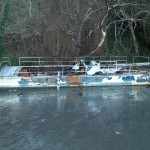 In addition, the report provides information as to who should be contacted if a derelict vessel is found. The contact information is quite detailed to specific cases but fails in the larger case when numerous derelict vessels are washed ashore. This is the situation in Cadboro Bay. In addition, the report has a caveat in the form of the following disclaimer:
In addition, the report provides information as to who should be contacted if a derelict vessel is found. The contact information is quite detailed to specific cases but fails in the larger case when numerous derelict vessels are washed ashore. This is the situation in Cadboro Bay. In addition, the report has a caveat in the form of the following disclaimer:
Readers are cautioned that this paper is not legal advice. It is the intention of Ministry of Forests, Lands and Natural Resource Operations to update this paper as provincial and federal programs evolve.
My colleague, Adam Olsen has written a blog entry detailing longstanding municipal concerns regarding the lack of federal and provincial leadership in dealing with derelict and abandoned vessels that pollute our coastline. Most recently he worked to raise awareness of the plight of the Chilcotin Princess at the abandoned fish cannery in Namu, BC. The good news is that province and the federal government worked to remedy the situation at Namu, but the piecemeal approach to the management and disposal of derelict and abandoned wrecks is not working.
On Friday January 15, I walked the length of Gyro Beach to get a sense of the scale of the problem we are facing in the riding of Oak Bay-Gordon Head. It was far worse than what I had expected. For quite some time, there has been one derelict vessel (see thumbnail to the right above) that was difficult to reach (except at low tide). Last year I’d inquired as to the possibility of removing it and quickly realized the complexity of the jurisdictional quagmire. But the situation now is very serious. Below I show a few images of the vessels that were present.
So where do we go from here? Clearly the status quo is not working and clearly this is neither a new problem nor one that will go away any time soon. Perhaps a way forward is to explore the innovative steps that have been taken by our friends in Washington State.
While I will be exploring broader policy solutions in the months ahead, I have sent the Minister of Forests, Lands and Natural Resource Operations a letter (reproduced below) urging him to deal with an immediate and urgent problem. One of the many wrecks (see image below) on the beach in Cadboro Bay is immediately adjacent to Gyro Park which has been extensively upgraded and improved over the last few years. Gyro park is a regional treasure and has been the playground of several generations of young children (including my wife and me in the 1960s and 1970s and our children in the 1990s and 2000s). Having this wreck so close to a children’s playground is certainly unsafe. And we do not want to wait until an accident happens to have it removed.
Letter to Minister Thomson
Via email to: FLNR.minister@gov.bc.ca
Honourable Steve Thomson
Minister of Forests, Lands and Natural Resource Operations
Room 248, Parliament Buildings
Victoria, BC V8V 1X4
Dear Minister Thomson:
Re: Derelict wreck in Cadboro Bay
I have been contacted by residents in my riding of Oak Bay-Gordon Head and the Cadboro Bay Resident’s Association (“CBRA”) with respect to the beached derelict vessel Pacific Sun King that washed up on December 5, 2015. The residents are very concerned about the vessel as a hazard in Cadboro Gyro Park where it is located, on the Crown Provincial foreshore in the upper inter-tidal zone of Cadboro Bay. The vessel is interfering with public access and presents a danger to children who play in the park and in the area. This area is heavily used by the public and especially children.
The CBRA have been in contact with the Municipality of Saanich and their representatives have confirmed that the responsibility for the removal of the wreck does not fall to Saanich since it is located seaward of the formal boundaries of the park.
I am writing to ask the Provincial Government to take the necessary steps to deal with this urgent matter. In addition to a safety issue for children and residents who access the park and beach, the vessel contains a diesel fuel tank and potential seepage that is an environmental hazard.
I look forward to a reply at your earliest opportunity.
Best wishes,
Andrew Weaver, MLA
Oak Bay-Gordon Head

